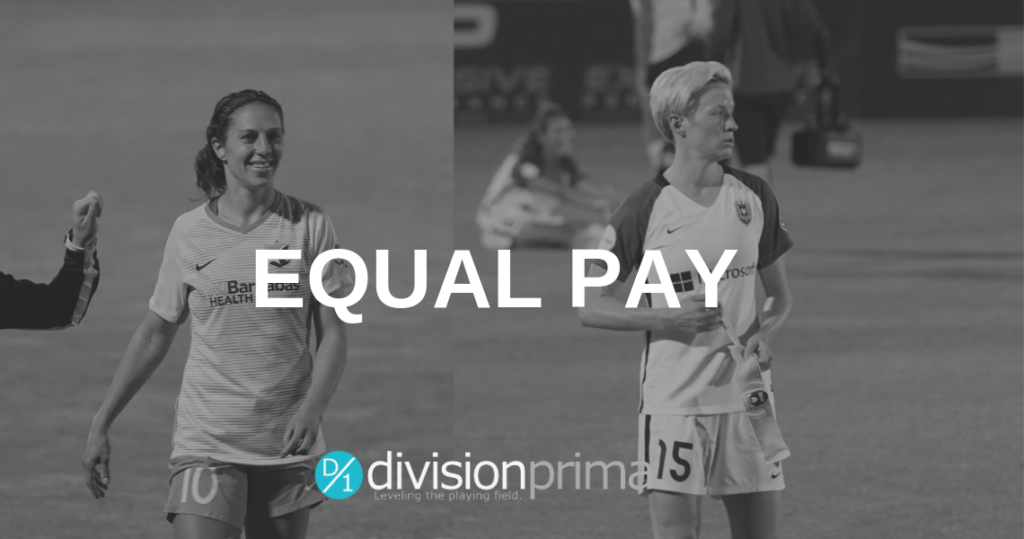
Equal Pay For Women: Let’s Start with the UWNT
Snapshot:
- In March 2019 the USWNT filed a class-action lawsuit
(Annalise Keating Style) equal pay for the women’s team. - The US Soccer Federation released a report showing that from 2016-2018 the women’s events brought in $50.8 million, where the men’s only brought in $49.9 million.
- Players on the USWNT are paid a quarter of what the men are. That’s $0.25 for every $1 the men get.
- Update USWNT has tentatively agreed to move to mediation post World Cup
The USWNT has higher revenue than the men.
With the World Cup in full swing, it seems like a good time to bring up a very important issue, equal pay for women. The US Women’s National Team (USWNT) is a good reference point because, especially regarding sports, one of the rebuttals to equal pay is, “The men’s teams generate more money.” The USWNT numbers speak for themselves as far as highlighting the income disparity. This provides a platform for a real discussion.
The USWNT has out-earned the men’s over the last three years. The financial report released by the US Soccer Federation (USSF) shows that from 2016 through 2018 the USWNT game generated $50.8 million in revenue compared to $49.9 million from the men’s games.
Class Action Lawsuit Equal Pay For USWNT
Here’s a little background, in March 2019 the USWNT filed a class-action lawsuit against the USSF for wage-discrimination. The plaintiffs are seeking equitable pay and treatment, along with damages. The catalyst for this suit was despite the USWNT generating almost $20 million more in gate revenue than the men’s team, the women are paid a quarter of what the men earn. Here are a few highlights from the complaint pulled from ESPNW:
Complaint Highlights:
- The lawsuit claims that from March 2013 throughDec. 31, 2016, when the previous collective bargaining agreement expired,players on the women’s team could make a maximum salary of $72,000, plusbonuses for winning non-tournament games as well as World Cup appearances andvictories, and for Olympic placement.
- A comparison of the WNT and MNT pay shows thatif each team played 20 friendlies in a year and each team won all 20friendlies, female WNT players would earn a maximum of $99,000 or $4,950 pergame, while similarly situated male MNT players would earn an average of$263,320 or $13,166 per game against the various levels of competition theywould face. The lawsuit further cites the women’s three World Cup titles, fourOlympic gold medals and the 2015 World Cup title game being the most-watchedsoccer match in American television history. The USWNT has also been ranked No.1 in the world for 10 of the past 11 years.
- The lawsuit also references the“revenue-sharing model” the U.S. Women’s National Team PlayersAssociation (USWNTPA) pitched as part of a new collective bargaining agreement,which took effect on Jan. 1, 2017, and runs through 2021. At the time, thepitch was meant to challenge U.S. Soccer’s assessment that “marketrealities do not justify equal pay.” Friday’s filing states: “Underthis model, player compensation would increase in years in which the USSFderived more revenue from WNT activities and player compensation would be lessif revenue from those activities decreased. This showed the players’willingness to share in the risk and reward of the economic success of theWNT.”
You can download the full complaint here. You can read more about the lawsuit here.
Update: The USWNT has tentatively agreed to move to mediation, an article can be found here. If successful this could end the year-long fight for justice for the USWNT.
Where do I start to help Equal Pay For Women?
Equal pay for women not a quick fix and it is a complex problem but there are some bureaucratic ways to make progress like salary transparency policies and laws banning employers from asking new hires about past earnings. These are a great first step, but you can take action on a day to day basis. First, break down the old practice of “salary is not discussed” and talk to your friends or confidants about salary. Push your co-workers to find out salary. Discussion is an effective way to spread the word and to find out if you or someone else is getting screwed. Income inequality is happening throughout industries and attention must be drawn to the issue in order to work toward solving the problem.
Stay strong and keep fighting.
